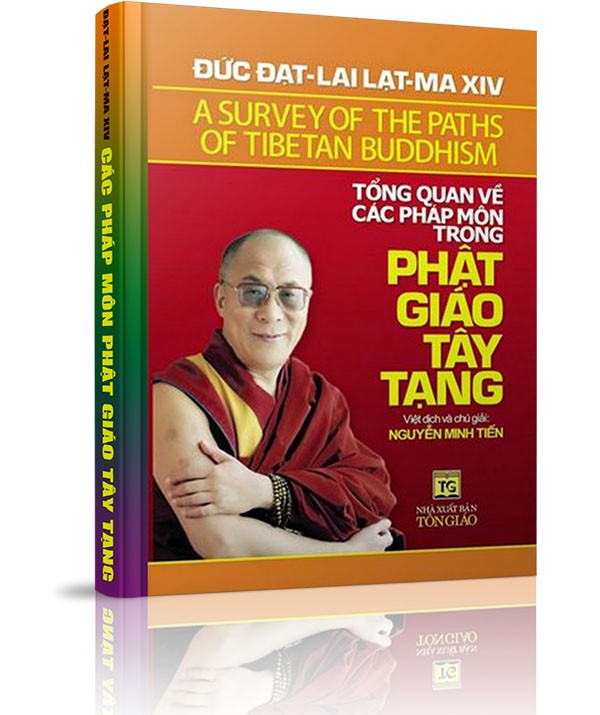Hạnh phúc và sự thỏa mãn của con người cần phải phát xuất từ chính mình. Sẽ là một sai lầm nếu ta mong mỏi sự thỏa mãn cuối cùng đến từ tiền bạc hoặc máy điện toán.Đức Đạt-lai Lạt-ma XIV
Nụ cười biểu lộ niềm vui, và niềm vui là dấu hiệu tồn tại tích cực của cuộc sống.Tủ sách Rộng Mở Tâm Hồn
Rời bỏ uế trược, khéo nghiêm trì giới luật, sống khắc kỷ và chân thật, người như thế mới xứng đáng mặc áo cà-sa.Kinh Pháp cú (Kệ số 10)
Con tôi, tài sản tôi; người ngu sinh ưu não. Tự ta ta không có, con đâu tài sản đâu?Kinh Pháp Cú (Kệ số 62)
Cái hại của sự nóng giận là phá hoại các pháp lành, làm mất danh tiếng tốt, khiến cho đời này và đời sau chẳng ai muốn gặp gỡ mình.Kinh Lời dạy cuối cùng
Ý dẫn đầu các pháp, ý làm chủ, ý tạo; nếu với ý ô nhiễm, nói lên hay hành động, khổ não bước theo sau, như xe, chân vật kéo.Kinh Pháp Cú (Kệ số 1)
Cho dù người ta có tin vào tôn giáo hay không, có tin vào sự tái sinh hay không, thì ai ai cũng đều phải trân trọng lòng tốt và tâm từ bi. (Whether one believes in a religion or not, and whether one believes in rebirth or not, there isn't anyone who doesn't appreciate kindness and compassion.)Đức Đạt-lai Lạt-ma XIV
Những chướng ngại không thể làm cho bạn dừng lại. Nếu gặp phải một bức tường, đừng quay lại và bỏ cuộc, hãy tìm cách trèo lên, vượt qua hoặc đi vòng qua nó. (Obstacles don’t have to stop you. If you run into a wall, don’t turn around and give up. Figure out how to climb it, go through it, or work around it. )Michael Jordon
Những khách hàng khó tính nhất là người dạy cho bạn nhiều điều nhất. (Your most unhappy customers are your greatest source of learning.)Bill Gates
Vui thay, chúng ta sống, Không hận, giữa hận thù! Giữa những người thù hận, Ta sống, không hận thù!Kinh Pháp Cú (Kệ số 197)
Nếu muốn đi nhanh, hãy đi một mình. Nếu muốn đi xa, hãy đi cùng người khác. (If you want to go fast, go alone. If you want to go far, go together.)Ngạn ngữ Châu Phi
Trang chủ »» Danh mục »» TỦ SÁCH RỘNG MỞ TÂM HỒN »» A Survey of the Paths of Tibetan Buddhism »» The Second Turning of the Wheel of Dharma »»
 Xem Mục lục
Xem Mục lục 

DO NXB LIÊN PHẬT HỘI PHÁT HÀNH
Mua sách qua Amazon sẽ được gửi đến tận nhà - trên toàn nước Mỹ, Canada, Âu châu và Úc châu.
Quý vị đang truy cập từ IP 216.73.216.80 và chưa ghi danh hoặc đăng nhập trên máy tính này. Nếu là thành viên, quý vị chỉ cần đăng nhập một lần duy nhất trên thiết bị truy cập, bằng email và mật khẩu đã chọn.
Chúng tôi khuyến khích việc ghi danh thành viên ,để thuận tiện trong việc chia sẻ thông tin, chia sẻ kinh nghiệm sống giữa các thành viên, đồng thời quý vị cũng sẽ nhận được sự hỗ trợ kỹ thuật từ Ban Quản Trị trong quá trình sử dụng website này.
Việc ghi danh là hoàn toàn miễn phí và tự nguyện.
Ghi danh hoặc đăng nhập